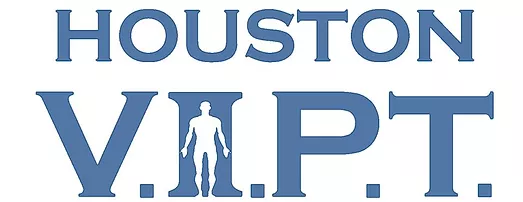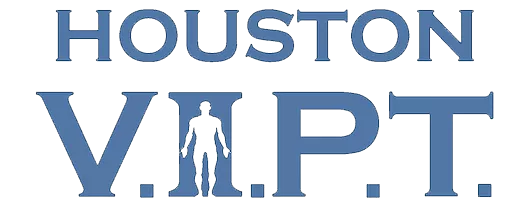A middle-age client recently told me that for several years he had been experiencing occasional night cramps ranging from mild to severe with no known cause. About 1-2 weeks ago, he suffered a severe night cramp in his lower leg which persisted and began to cause pain in his leg even when just walking.
He asked:
-Why have I been getting these cramps?
-What can I do to prevent more cramps in the future?
-What can I do about my current pain?
Let’s begin by explaining muscle cramps.
While most people reading this have experienced muscle cramps, science is still “confused” about why we get them and what exactly to do to avoid them.
What is a muscle cramp?
Also known as a “Charley horse”, muscle cramps are when a muscle involuntarily contracts and remains contracted, sometimes up to 10 minutes. To simplify it, a muscle cramp occurs when muscle fibers of a given muscle get “stuck” in the overlapped position.
What do you mean by “overlapped position”?
Muscles are comprised of different types of filaments arranged in a mostly parallel alignment, meaning they run alongside each other. To contract or relax a muscle, the fibers/filaments basically “climb” alongside each other, in the direction of overlapping (when a muscle is contracted) or in an “end-to-end” direction thereby overlapping less (when a muscle is stretched). This climbing is achieved by “cross-bridges” that reach across from one filament/fiber to the other, connecting/latching, pulling itself up or down along it’s neighbor, then disconnecting. In an overlapped position, there are a maximal amount of cross-bridges connecting one filament/fiber to the other.
What causes cramping?
Cramping can be caused by over-exertion, tight muscles, dehydration insufficient magnesium or potassium or even staying in a particular position for an extended period especially an “overlapped” position for the muscle fibers (muscle contracted), the latter especially cramp inciting when coupled with a voluntary contraction.
Example:
Mr. Vipt has not stretched his calf muscles since Y2K (he only did it then because he was preparing to run for refuge when the world imploded). He was about to leave the mall today after another disappointing sale at Abercrombie when he decided that he needed another grande espresso (that’s the big size right?) from Starbucks. On his way home he checked his pedometer and realized that he unwittingly put on 12,500 steps today, compared to 5,000 maximum on a normal day. Several hours later, he awoke in bed with a ‘charley horse’ in his left calf muscle that persisted for several minutes.
Analysis: The following are all factors that may have caused this cramping:
- Lack of stretching, muscles too tight since 1999
- Over exertion- walking an extra 7,500 steps
- Dehydration- Mr. Vipt drank more caffeinated drinks than non-caffeinated drinks (icee’s aren’t hydrating!)
- While sleeping, Mr. Vipt’s toes were pointed down from the weight of the blanket resulting in his calf muscles being in an “overlapped” position for a long time
- Activation- Mr. Vipt was anxious about going back to work tomorrow and was actually contracting his calf muscles in his sleep while his toes were pointing, eg: calf was in shortened position.
While it is difficult to tease out exactly which factor(s) cause cramping, it is safe to say from experience, that with a few changes, the likelihood of cramping will decrease dramatically.
Stretch: For general health and mobility, stretching is crucial. This includes avoidance of muscle cramping. If we take the time to extend our muscle fibers, they will overlap each other less and be less likely to “get stuck” in an overlapped position.
Over-exertion: Exertion is great, we should do more of it and not fear waking up with a muscle cramp. The key is to stretch and to ease into activity. Instead of doubling our ‘mileage’ from 5,000 steps one day to 10,000 steps the next, do a few days in-between at 6,500 steps and 8,000 steps to allow your muscles to acclimate to the higher activity levels. And with the increased activity which will contribute to tightening our muscles, offset that tightness with a little extra stretching. For most people, extra stretching= any stretching, since most people never stretch.
Hydration: Pay attention to what you’re drinking. Just like someone avoiding a hangover will drink one cup of water to one alcoholic beverage, we should be aware that if we’re drinking caffeinated beverages, we should ‘offset’ them with water or something that is hydrating (caffeine free soda does not qualify) and we should strive to be drinking 8 cups of water per day anyway.
Position: We cannot avoid sleeping with our toes pointed down (there are medical devices/products to assis. However, if we are diligent about the other important factors, this last straw should not break the camel’s back.
Activation: If you are feeling cramping coming on (sometimes there are warning signs, muscles twitching but not contracting) be sure to avoid contracting the muscle when it is shortened. Rather, pull the toes up towards your nose to achieve a stretching of the calf. In the case of an over-exerted calf muscle, don’t contract the calf with the toes pointed. For hamstrings, don’t contract the hamstring muscle when the knee is bent, and if it feels tight or “twitchy”, straighten the knee to achieve a stretch of the muscle and avoid cramping.
Another example of position causing cramping is a hamstring cramp while in a sitting position. I remember experiencing this at the beginning of high school basketball season each year before reaching peak mid-season conditioning. While sitting and doing my homework after practice early on in the season if I pulled myself forward on my chair by digging my heel into the floor underneath me (eg: activating my hamstring while it was in shortened/overlapped position since I was sitting with my knee bent). The muscle cramp would come on instantaneously and it’s easy to see why: Overexertion since my muscles weren’t in great shape yet, muscles tight from the off-season, possibly dehydrated, muscle in shortened position.
What to do:
When a cramp comes on, the best thing is to gently get the muscle into a stretched position. For a calf cramp this would be pulling toes upward. For hamstring it would be straightening out the knee.
If this is difficult to do and the muscle won’t release, try relaxing the muscle, breathing deeply and rotating the joint. For the calf, rotate the foot/ankle back and forth (left to right) while avoiding pointing toes down.
For hamstring, try and rotate the whole leg at the hip while remembering to breath (sometimes hard with the pain) and relaxing the muscle to allow you to straighten the knee and eliminate the cramp. Additionally, massage the muscle gently to encourage it to release.
Disclaimer: This article is intended as a resource only. For diagnosis and treatment you should consult your licensed healthcare provider.


